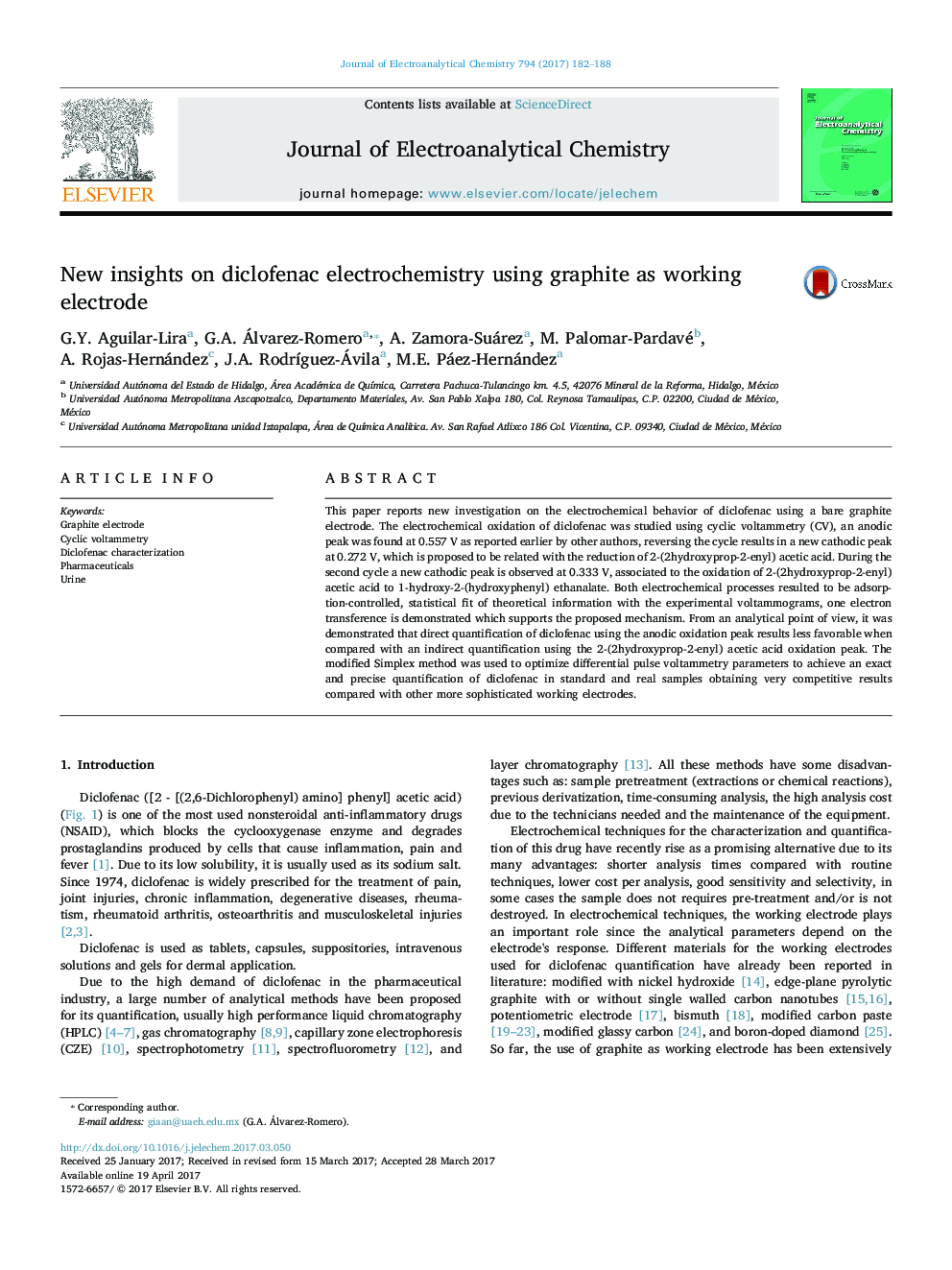| Article ID | Journal | Published Year | Pages | File Type |
|---|---|---|---|---|
| 4907869 | Journal of Electroanalytical Chemistry | 2017 | 7 Pages |
â¢A methodology for the indirect quantification of diclofenac is established.â¢New insights in the electrochemical behavior of diclofenac are discussed.â¢Optimization via chemometrics offers results equivalent to complex electrodes.â¢Quantification of diclofenac in biological and pharmaceutical samples is reliable.
This paper reports new investigation on the electrochemical behavior of diclofenac using a bare graphite electrode. The electrochemical oxidation of diclofenac was studied using cyclic voltammetry (CV), an anodic peak was found at 0.557Â V as reported earlier by other authors, reversing the cycle results in a new cathodic peak at 0.272Â V, which is proposed to be related with the reduction of 2-(2hydroxyprop-2-enyl) acetic acid. During the second cycle a new cathodic peak is observed at 0.333Â V, associated to the oxidation of 2-(2hydroxyprop-2-enyl) acetic acid to 1-hydroxy-2-(hydroxyphenyl) ethanalate. Both electrochemical processes resulted to be adsorption-controlled, statistical fit of theoretical information with the experimental voltammograms, one electron transference is demonstrated which supports the proposed mechanism. From an analytical point of view, it was demonstrated that direct quantification of diclofenac using the anodic oxidation peak results less favorable when compared with an indirect quantification using the 2-(2hydroxyprop-2-enyl) acetic acid oxidation peak. The modified Simplex method was used to optimize differential pulse voltammetry parameters to achieve an exact and precise quantification of diclofenac in standard and real samples obtaining very competitive results compared with other more sophisticated working electrodes.
